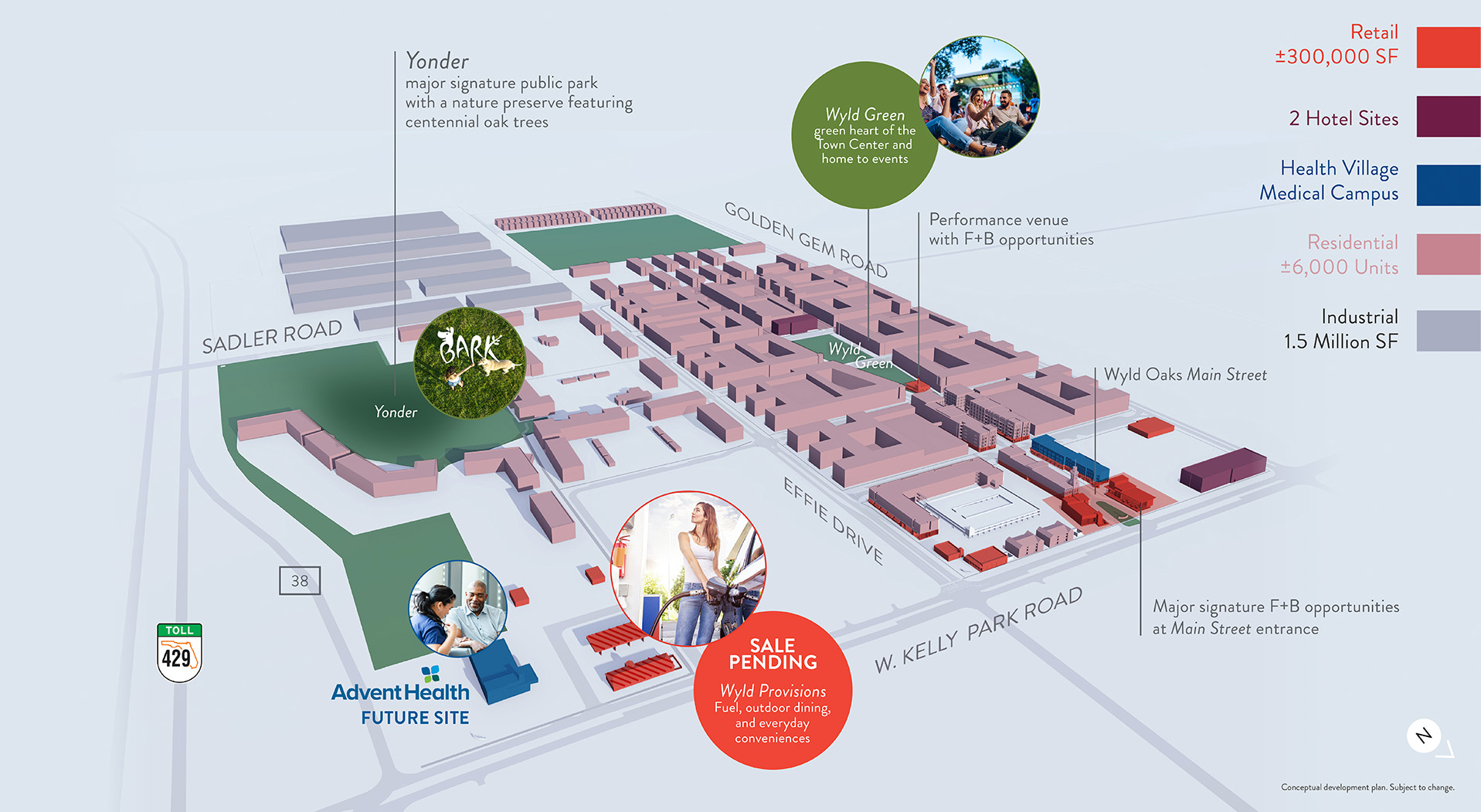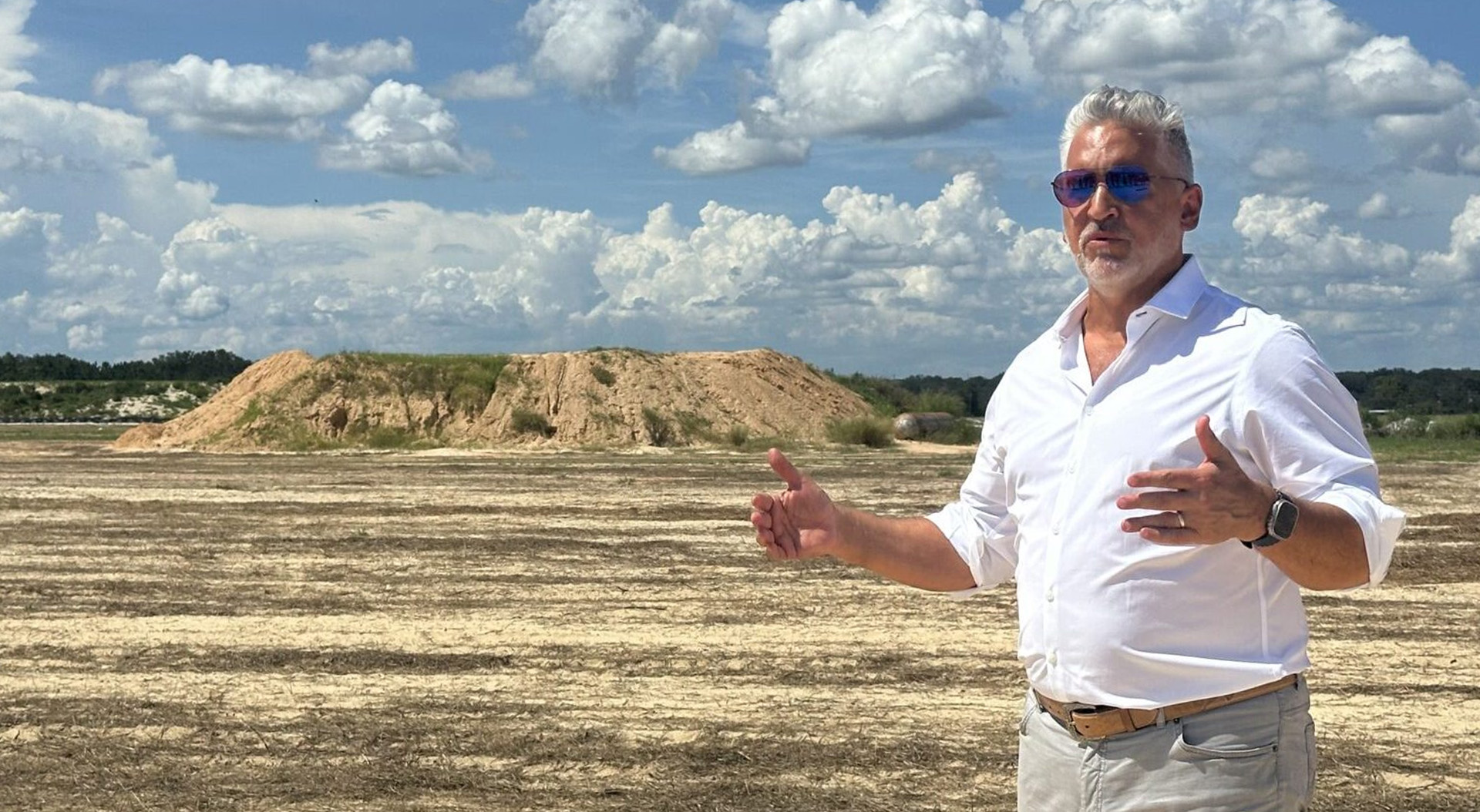The demand for mixed-use communities is surging. These forward-thinking developments are designed to bring people together in vibrant, interconnected environments where living, working, and recreational spaces coexist harmoniously. Among them is Wyld Oaks, a master-planned center of gravity in northwest Orlando, that is quickly becoming the blueprint for the future of mixed-use communities as a facet of urban development.
From its thoughtfully designed town center to its emphasis on sustainability and walkability, Wyld Oaks is a model of what a modern, integrated community can and should be. Let’s take a deeper look at why Wyld Oaks is setting a new standard in the development of mixed-use communities and how it’s leading the charge for the future of urban living.
A Vision for a Connected Community
At the heart of Wyld Oaks’ success is its ability to blend the best of both worlds: dynamic urban design with abundant natural spaces. Bob Gibbs, FASLA, AICP, GPG, President of Gibbs Planning Group and consultant to the project, emphasizes the project’s overarching goal of creating a destination, “Wyld Oaks is more than just a project; it’s a model for how modern communities should be designed—integrated, walkable, and self-sustaining.”
This vision for a community where people can truly live, work, and play without ever needing to leave is what sets Wyld Oaks apart. The central town center is designed to be a hub of activity, with retail, dining, office spaces, and healthcare integrated seamlessly into the residential areas. Residents will have access to everything they need just a few steps from their front door, making daily life more convenient and connected.
A key highlight of this vision is the planned Health Village, which will anchor Wyld Oaks as a center for community wellbeing. As Joseph Beninati, Founder of Wyld Oaks explains:
“One of the inspirations that we took in developing the master plan was to set in place a future health care village, which will not only create very good, high-paying jobs but also serve as an incredible wellness asset for the community surrounding Wyld Oaks.”
—Joseph Beninati, Founder of Wyld Oaks
This health village will not only provide critical services and employment opportunities but also manifest Wyld Oaks’ commitment to wellness.
The development’s proximity to major highways, like State Road 429, ensures that Wyld Oaks will not only be accessible but also well-positioned to grow in this area of Orlando that’s booming with new communities from the nation’s top homebuilders. With a mix of housing options—from townhomes and loft-style apartments to single-family homes—Wyld Oaks will offer something for every stage of life.
The Integration of Nature and Design
One of the most defining features of Wyld Oaks is its commitment to preserving the natural landscape. With a heritage grove of southern live oaks known as Yonder, the project will integrate this precious natural resource into its urban design, creating a sanctuary for the community and visitors to enjoy.
Jim Constantine, Principal at LRK, describes how the development seeks to strike a balance between nature and the built environment, “By blending a vibrant town center with preserved nature and an emphasis on walkability, Wyld Oaks is creating the future of urban living today.”
Rather than clearing land for traditional urban sprawl, Wyld Oaks will celebrate the land’s inherent beauty by incorporating green spaces and natural elements throughout the community. The area surrounding Yonder will feature walking trails, recreational areas, and smaller-scale pop-up shops that enhance the natural ambiance, as well as the future BARK dog park. This integration of green spaces will improve the aesthetic and quality of life, and contribute to the community’s sustainability.
“Florida’s population has grown from 15 million to 23 million residents over the past decade, and many of these new residents are looking for ways to connect. A dog park is a fantastic way to meet people while enjoying time with your pet.”
—Joseph Beninati, Wyld Oaks
Through spaces like BARK and Yonder, Wyld Oaks will encourage both active lifestyles and meaningful interactions between neighbors.

Why Walkability and Connectivity Matter
The future of successful mixed-use communities hinges on one key factor: walkability. Wyld Oaks is designed with this principle at its core, providing wide sidewalks, bike lanes, and well-connected streets that encourage residents to walk and bike rather than rely on cars. This connectivity will create a sense of community, making it easy for people to interact, meet friends for coffee, or pop into the local shop without ever needing to drive.
“The future of development lies in mixed-use communities that offer everything in one place. Wyld Oaks is setting the stage for the next wave of urban planning in the Orlando area.”
—Kevin Roberson, Kimley-Horn and Associates, Inc.
The walkability of Wyld Oaks isn’t just a convenience—it’s also a critical factor in its long-term sustainability. By reducing dependence on cars, Wyld Oaks will lower its carbon footprint and create more vibrant public spaces. Residents will be able to stroll through the town center, enjoy a meal at a sidewalk café, or take their dogs to the park—all without leaving the neighborhood.
Diversity and Dynamic Energy
Another key aspect that sets Wyld Oaks apart from traditional developments is the diversity of its uses. While the town center will offer retail shops, offices, and cafés, Wyld Oaks will also have recreational areas, green spaces, and community events that bring people together. By having different types of spaces in close proximity, Wyld Oaks fosters a dynamic energy that’s impossible to achieve in more conventional, single-use developments.
“What makes Wyld Oaks different is the seamless integration of various uses—residential, retail, and recreation—within a few blocks of each other. It creates a sense of dynamic energy that will make the community feel alive.”
—Jim Constantine, LRK
This mix of uses promotes a more vibrant, socially interactive environment. Residents will find themselves frequently crossing paths with neighbors, whether they’re out walking their dogs and enjoying BARK, shopping, or attending an event at Wyld Green. The goal is to create a space where people feel connected to one another, building a true sense of community.
A Model for Future Development
Ultimately, Wyld Oaks will be more than just a development; it’s meant to be a visionary model for the future of mixed-use communities. By seamlessly integrating residential, commercial, wellness, and recreational spaces with carefully and intentionally preserved nature, it has begun creating a blueprint that can inspire future developments across the country.
“Wyld Oaks isn’t just a place to live; it’s a community designed to enrich lives—where every detail, from the design to the location, will enhance daily experiences for residents and visitors.”
—Bob Gibbs, Gibbs Planning Group
As Wyld Oaks continues to take shape, it will not only be a place where people live, work, and play—it will be a testament to what’s possible when communities are thoughtfully designed with the future in mind. If you’re looking for a place where you can truly have it all—a place that blends nature, innovation, and connectivity—Wyld Oaks is where the future of urban living is branching out.



